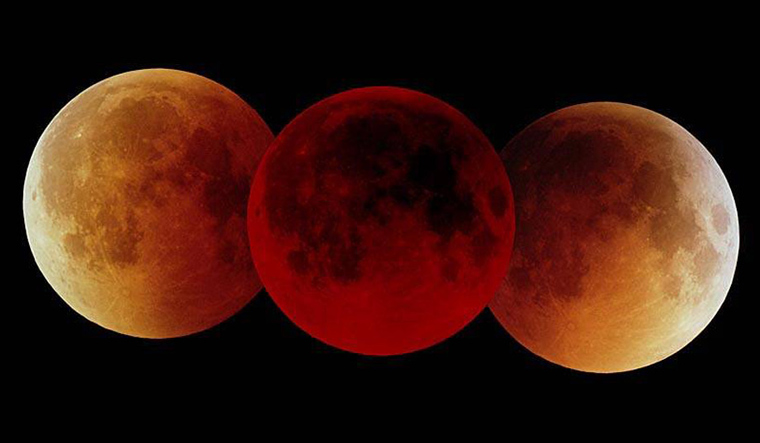Skygazers are getting ready to witness the century's longest total lunar eclipse which will take place in the intervening night of July 27 and 28. Friday's total lunar eclipse will last 103 minutes or 1 hour, 42 minutes and 57 seconds, to be precise. Interestingly, the total lunar eclipse will coincide with another relatively rare celestial phenomenon known as the Mars opposition.
What is a total lunar eclipse?
A lunar eclipse occurs when the Moon falls under the Earth's shadow by passing directly behind the Earth. A total lunar eclipse occurs when the Earth's shadow moves across the Moon, blocking out light from the sun. As the shadow falls on the surface of the Moon, it takes on a distinctive red glow—an effect caused by the bending of light in Earth's atmosphere. And hence, it is known as Blood Moon.
Where will it be visible?
The eclipse will be visible across the world, except North America. Consider yourself lucky if you are in East Africa, India or Southeast Asia, for these places will have the best of views.
In India, there are concerns over cloudy skies, thanks to the monsoons. "People in Jammu and Kashmir, and Tamil Nadu are most likely to be able to witness the event clearly," said Aniket Sule, Chair of the Public Outreach and Education Committee (POEC) of ASI.
What is so special about this eclipse?
The next time the moon comes so close to Earth will only be in 2029. In terms of duration of the eclipse, Friday's running time won’t be matched until 2123. The last long eclipse was on July 16, 2000, and lasted 106 minutes.
Eclipse time in India
The Moon would enter the penumbral shadow of the Earth at about 10.53 pm. Nothing much will be noticeable to the untrained eyes for next 30-40 minutes. After that, one might notice gradual change in the brightness on the lunar disk.
By 11.54 pm, the Moon will enter the umbra of the Earth's shadow. The dark shadow will now be seen progressing on the lunar disk. This will be quite noticeable to the naked eyes.
By 1 am of July 28, the Moon will be completely inside the umbra of the Earth. At this time, the colour of the lunar disk will be red with it's many hues—crimson, brick red etc. The time of the maximum eclipse is 1.51 am. The total phase of eclipse will end at 2.43 am, it will be out of umbral shadow by 03.49 am and completely out of penumbra at 5 am.
What is Mars opposition?
Mars will rise around sunset and will set around the time of sunrise. An opposition happens when Mars is the closest to Earth in its orbit, both on the same side of the Sun.
The red planet will appear brighter and bigger than usual. Though the opposition of Mars is on Friday, it comes closest to us on July 31. This curious fact is because the orbits of all planets around the Sun are not a perfect circle, but an ellipse.
Due to this, the closest approach of Mars to us will occur four days later than its opposition. The distance between Mars and the Earth ranges between about 400-million kilometers (2.7 Astronomical Units, or AU) and 56-million km (0.38AU). The closest approaches occur during opposition.
(With PTI inputs)


